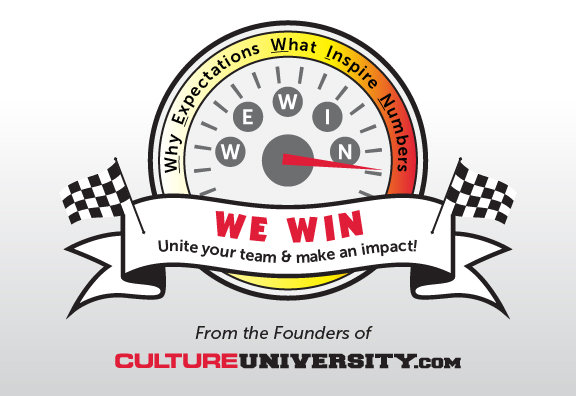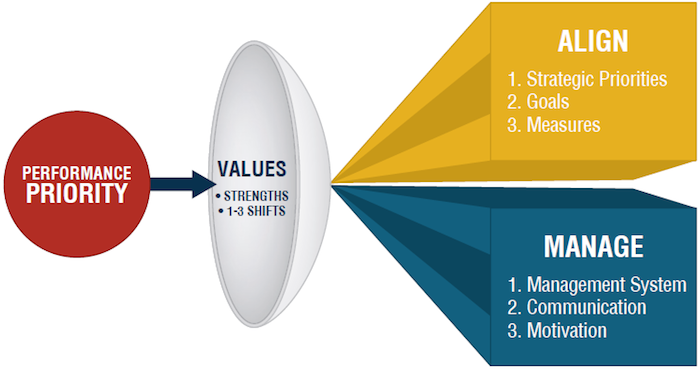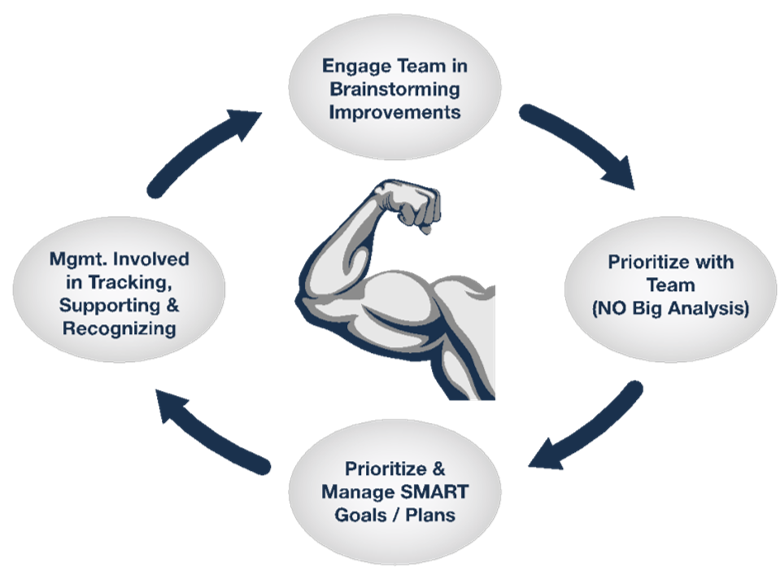A popular post I wrote for TLNT.com last year on organizational culture change is still on the first page of google search results for that topic.
I approached a training video company with course content based on that post and they felt culture is a topic best suited for top leaders. They explained that training video sales are higher if the content fits first line managers and individual contributors.
I explained the culture fundamentals that apply to top leaders also apply to work teams of any size since they are sub-cultures with behavior that’s also driven by cultural rules.
From that insight, the culture content was simplified and the WE WIN framework was born!
The benefits of the WE WIN framework
Leaders know culture is critical to business success but most don’t know how to translate that understanding to action and with a focus on results. The fundamentals about how to focus on both behavior and results are the key to uniting team members to make a meaningful impact in any type of organization and at any level.
WE WIN takes a broad and, what some might consider, soft topic and translates it to a straightforward framework that can be applied to most team challenges, problems, or goals.
W – WHY is the team approach being implemented?
The team leader or manager should assemble the team to review why an improved team approach is being implemented and the problem, challenge, or goal the initial work will be focused on to achieve results. Sounds simple but there are many culture fundamentals wrapped up in this first action:
- Results: Results are needed for any new cultural attribute to form. It doesn’t matter if it’s sales, drive thru wait times, parts produced, or some other area, but results for a shared goal must be able to be measured in some form.
- Purpose: It’s of course ideal if this problem, challenge, or goal can be connected in some form to the purpose of the organization. We all desire to make a meaningful impact in our own unique way.
- Importance of being part of a team: Most of us respond positively to being part of an effective team because 1) we desire to be part of something bigger than ourselves; and 2) teams position us to make a more meaningful impact than we can individually.
- Vision: What’s the leader’s vision for how the team can more effectively manage behavior and actions? Does the team share that vision and how can they add to it or refine it?
E – What are the expectations for all team members?
The team must define clear expectations they will coach and support each other to uphold. An excellent example of this came from an unlikely source. The Miami Dolphins football team was rocked by a bullying crisis last year but a group of team members united to define the “Dolphins Credo.” The Credo was printed on shirts in training camp and is now prominently displayed in the locker room.
Keep the following in mind with expected behaviors:
- Values must be translated to expected behaviors: We all interpret values from our own perspective (think about teamwork, respect, integrity, etc.) so it’s critical to define specific expected behaviors for a team to stay on the same page.
- Ownership is critical so team members should be involved in the process to clarify expected behaviors. The Dolphin players actually took it upon themselves to create the Credo. These behaviors shouldn’t be perceived as “coming down from the mountain top.”
- Focus on 1-3 specific behaviors to shift that need further reinforced or supported in order to effectively deal with the problem, challenge, or goal. Two behaviors in the Dolphins Credo that stood out to me as being in contrast to the bullying behavior are: 1) “If I see something — I will say something — I commit to call it as it is.” 2) “I am the change that I want to see in my team. I live respect and truth telling.”
- Commit: Team members must commit to coach and support each other to consistently show the expected behaviors. In the case of the Dolphins, it’s on and off the practice field–not just game time.
W: What improvement actions will we prioritize and manage?
Use basic feedback and prioritization techniques to engage the team in defining a few improvement actions to improve results with the priority selected in the WHY step AND to reinforce the expected behaviors from the EXPECTATIONS step.
Teams will naturally improve their effectiveness defining actions as they focus on the prioritization step. Some members may initially hold back their true feelings and ideas. Improvements may start from small ideas but the greater ideas and deeper feelings will emerge if initial priorities are constructively managed. It’s like building a muscle and effectiveness will improve as the “WIN” cycle is repeatedly followed.
It’s also important for the improvement actions to be documented for ongoing tracking.
I: Inspire and support each other through coaching and recognition.
Team members coach each other on the team behavior expectations and support each other as the actions are implemented. It may be appropriate to formalize an approach to peer recognition.
The Miami Dolphins players have formalized their recognition with the credo award. The award, symbolized with a gladiator holding a shield, is given to the top player – one on offense, one on defense, and one on special teams – after every week of practice, yes practice. It’s not the game ball or accolades after a great game but it’s the support of the credo in the work leading up to the game that’s recognized by the players.
N: Numbers – Focus on measurable results!
The team visibly measures a “unifying metric” related to the problem, challenge, or goal from the WHY step. Status on the actions from the “what” step are reviewed at a defined frequency, typically daily or weekly, and updated as the WIN cycle continues until the goal is achieved. Team members openly discuss their progress on the expected behaviors, action items, and delivering results.
These reviews may range from stand-up meetings at a whiteboard where key measures and actions are tracked to more formal meetings with reviews of an action plan and measure(s). The team will begin to collectively understand what behavior and action leads to results. Remember that results are required for any new cultural attribute to form. Behaviors will be repeated and spread as the WE WIN approach takes hold and progress is made.

The Journey
The WE WIN framework is all about a team being on a journey together to make a meaningful impact.
Michael Jordan was famously quoted: “there is no ‘I’ in team but there is in WIN.”
It’s difficult for individuals to give up behaviors ranging from self-preservation to selfishness if there isn’t a clear team approach focused on both behavior and results.
The WE WIN framework is just a starting point for meaningful change but it’s packed with culture fundamentals that apply in a small work group or large organization.
What do you think of the WE WIN framework? What team approach have you effectively utilized that’s focused on both behavior and results?

